Guy Williams: Here’s What Happened to the ‘Zorro’ and ‘Lost in Space’ Star
More than half a century after he was on TV, the actor and the characters he portrayed are still beloved
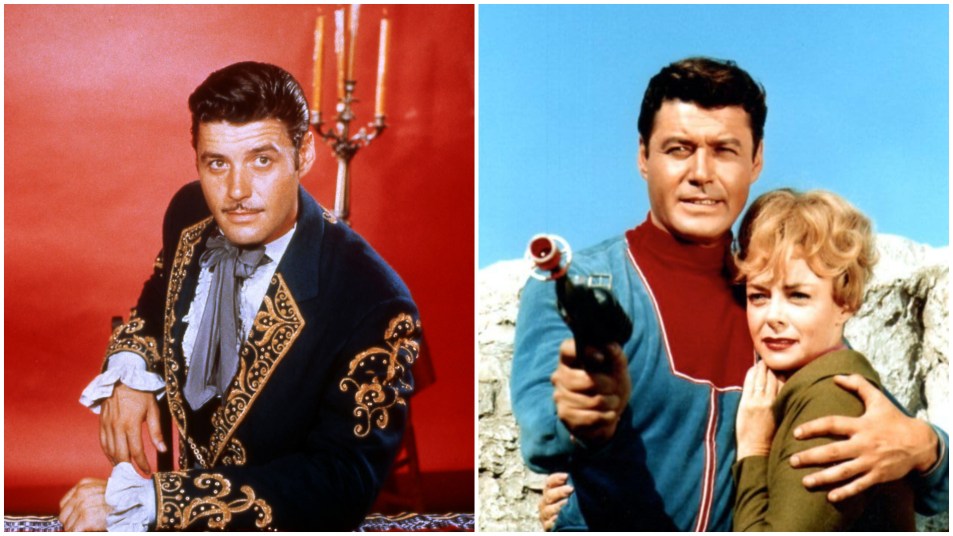
Actor Guy Williams rose to fame in the 1950s with Disney‘s swashbucking television series Zorro, and continued that ride well into the 1960s with the sci-fi show Lost in Space. But not long thereafter, he turned his back on it all, disappeared into South America and willingly allowed the media spotlight, that had so ensnared him, to simply fade away.
“A lot of actors who get into show business flit away their earnings, buying themselves mansions,” observes pop culture historian Geoffrey Mark. “And then they realize once however many seasons is over, that they can’t afford it. That’s when they start selling everything off. But Guy Williams was very realistic about the business of show business. He took his money and grew it so that by the time Lost in Space was over [in 1968], he was a very wealthy man. He didn’t need to work anymore, and since he didn’t need to be constantly acting, his attitude was, ‘This has been lovely, folks.'”
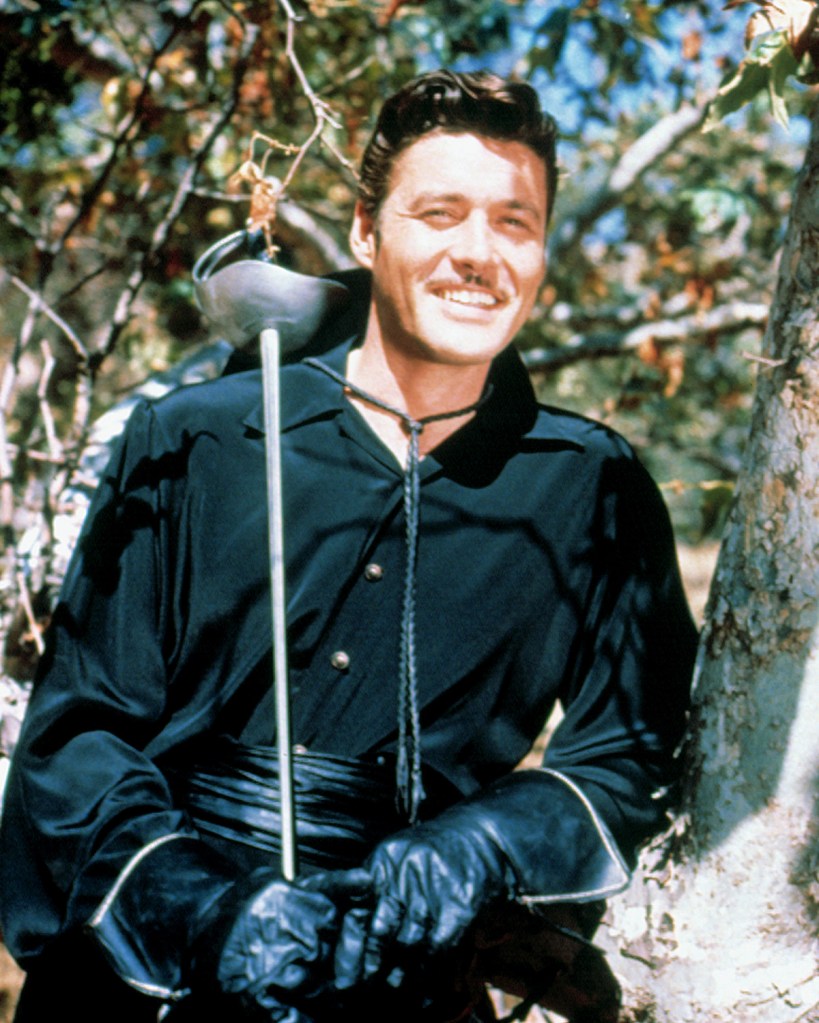
Before he was the man in black or traveling through the stars, Guy Williams was born Armando Joseph Catalano on January 14, 1924 in New York City. Although his parents had hoped he would follow his father’s career tract and becoming an insurance broker, Guy had other ideas — during World War II he worked as a welder, cost accountant and aircraft-parts inspector. Afterwards, he became a salesperson in Wanamaker’s luggage department.
At that point, he decided to send photos of himself to a modeling agency, which proved effective as he found himself being photographed for newspaper and magazine ads, book covers and billboards. And as he started looking towards acting, his agent suggested he change his name to something “less ethnic,” hence Guy Williams.
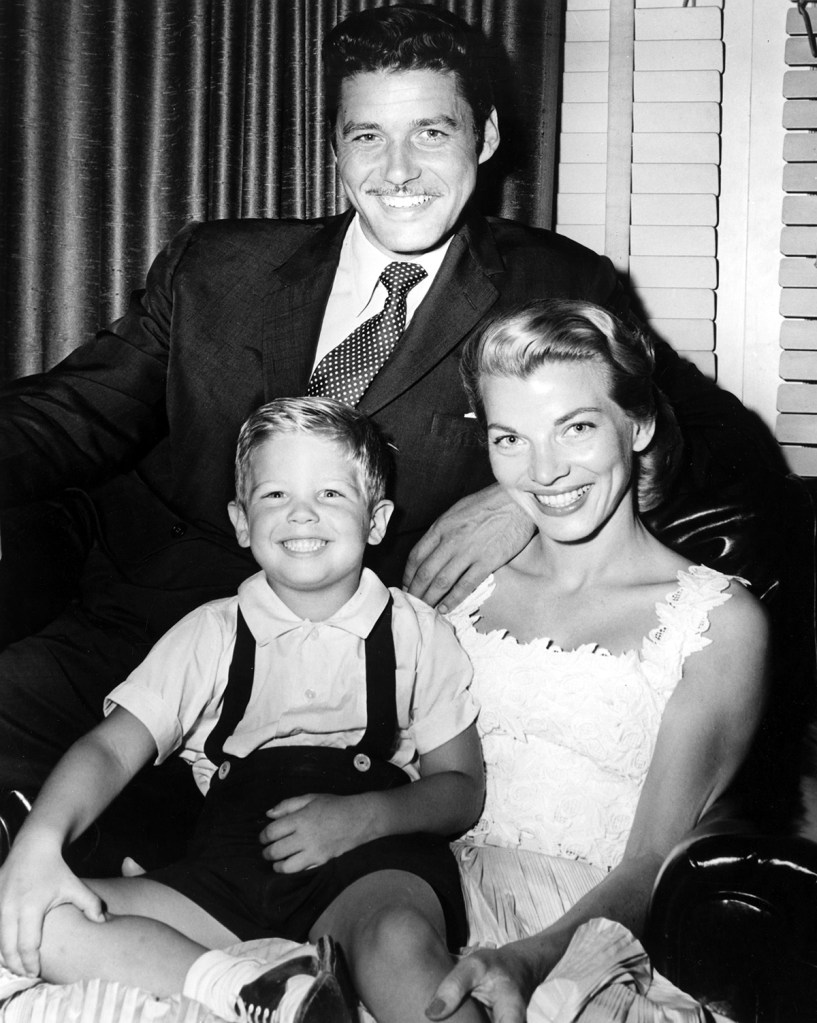
Points out Geoffrey, “People who met him early in his career, informed him that even using an Anglicized version of his Italian name was too ethnic. It was okay to be sexy, it was okay to be dark, it was okay to have smoldering good looks, but it was not good to not sound like you’re an American. This was the mindset.”
Detailed the Orlando Evening Star in a 1965 profile, “He started at New York’s Neighborhood Playhouse and appeared in East Coast stock company productions. It was his work at CBS actors’ workshop in New York that led to his first television role, a small part on a Studio One drama. It earned him a screen test and eventual contract with Universal-International.”
That contract resulted in about 20 walk on roles in films that didn’t amount to much of anything. When it was up, he walked, but then was persuaded to try out for the part of the masked hero, Zorro, the character that Walt Disney was turning into a television series.
Guy Williams takes on Zorro
As was the case with prose stories and movies (starring actors like Douglas Fairbanks and Tyrone Power), the show was set in the Los Angeles of 1820 when it was part of Spanish California and before Mexican independence. Zorro, who in reality is Don Diego de la Vega, aids Hispanic settlers and indigenous people oppressed by tyrannical rulers.
Williams, who was handsome, stood at 6-foot 3-inches and was an excellent fencer, was deemed perfect for the role.
“Guy was in incredibly good shape with a face that only God can give you, but because of an accident, he had a big scar on his shoulder, which is why there was no beefcake shots and almost no photos out there of Guy shirtless,” says Geoffrey. “And while he did a lot of little things before Zorro, the combination of the character, it being a Disney production and on ABC made the world Guy-conscious at a time when the leading actors were people like Tab Hunter and Rock Hudson.”
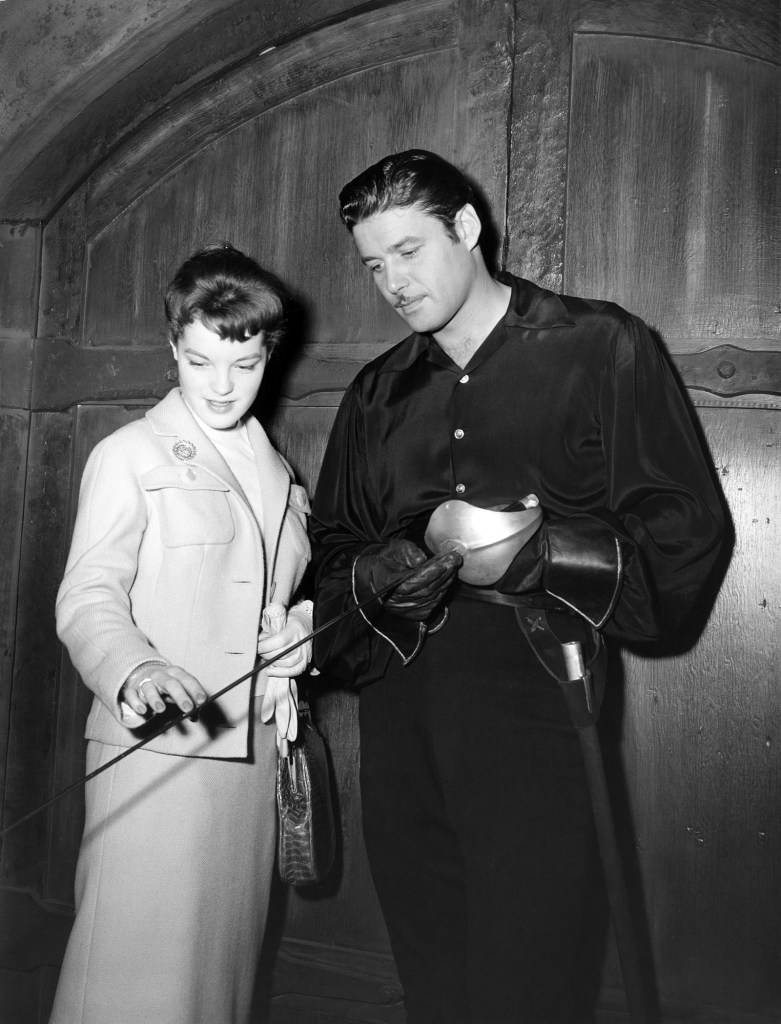
In “finding” the character, Williams’ put-on Spanish accent went through quite a change through the early days of production. “I had auditioned with a heavy Spanish accent,” he told Starlog magazine, “knowing I could drop it instead of starting out light and adding on. For the first couple of weeks, somebody would be tapping me on the shoulder as I’m walking around the set, and it would be Walt. He would say, ‘Can you bring it down a little, Guy.’ He didn’t know what he wanted, so I kept ‘bringing it down.’ One day, I finished the show and Walt didn’t tap me on the shoulder and that’s the accent I kept.”
Zorro was a tremendous hit from out of the gate, its storytelling unique in that each episode would end on something of a cliffhanger to be picked up the following week, creating a story arc format that would truly find its home in the era of streaming television. It ran from 1957 to 1959 for a total of 78 episodes, plus there would be four subsequent one-hour adventures.
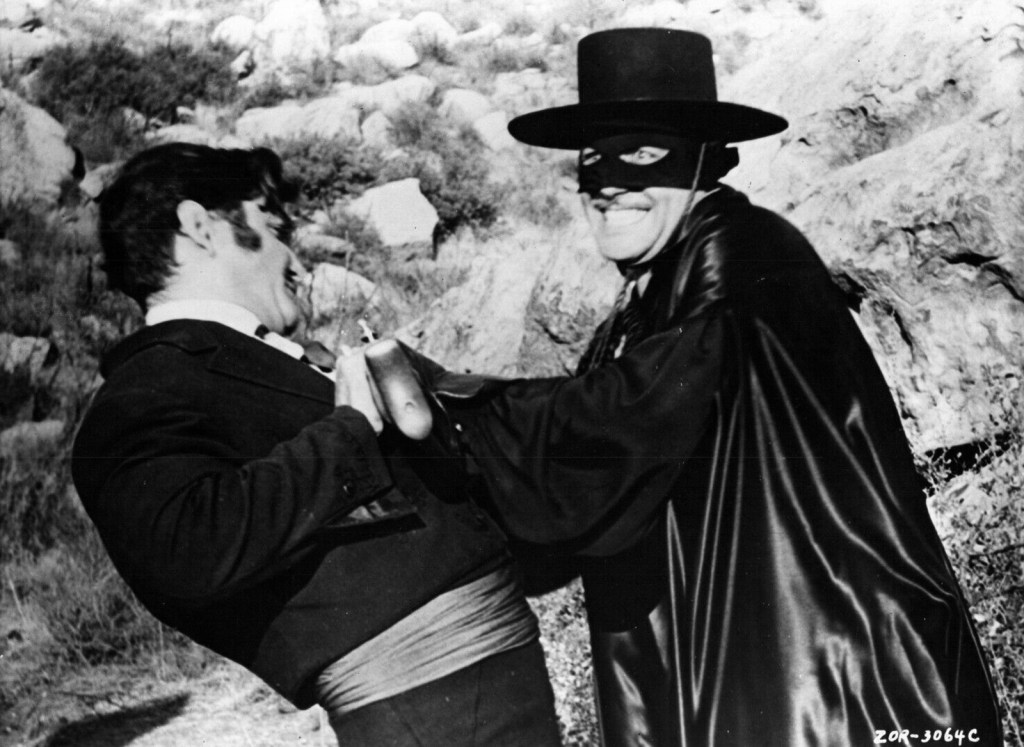
By 1958, though, it was becoming obvious that Williams had grown concerned about typecasting; that people — the audience and Hollywood producers — would only see him as Zorro. “When I’m not Zorro, I’m Diego,” he told the Longview Daily News at the time. “It’s like working in a movie you never finish. You can’t conclude anything as an actor.”
Things got worse in the sense that there was a period where he couldn’t do anything. While there should have been even more episodes of Zorro given the success of the show and the wide amount of merchandise it spawned, Disney demanded more money to produce the series, ABC refused to pay it and the matter ended up in court, with Williams under contract, unable to work anywhere else, but still getting his full salary.
Guy Williams in Bonanza
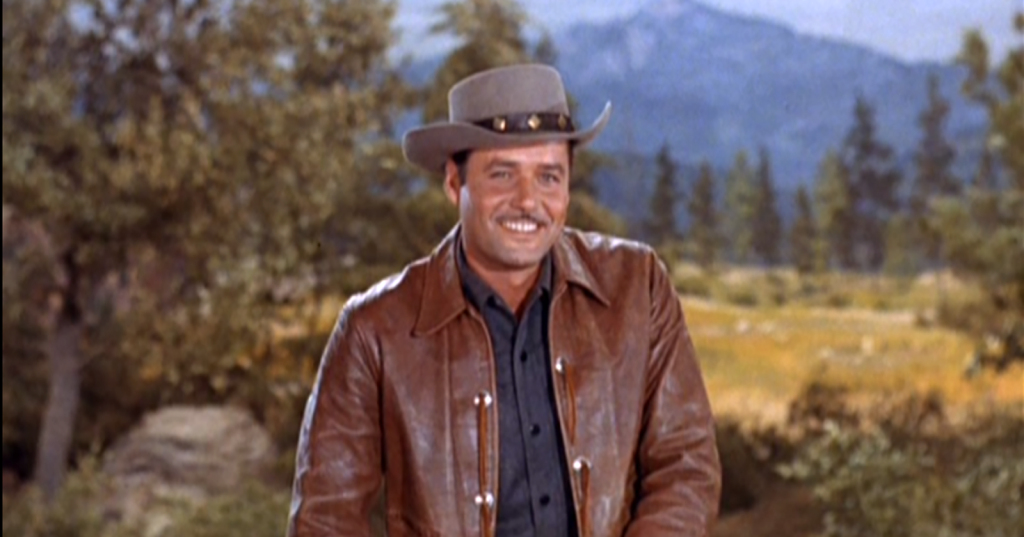
In between Zorro and Lost in Space, Williams actually stopped off at the Ponderosa ranch for a brief stay in 1964. When Bonanza actor Pernell Roberts, who played Adam Cartwright, decided to leave the show, Williams was brought in to play patriarch Ben’s (Lorne Greene) nephew, Will Cartwright. Although he was slated to remain a permanent cast member and one of the four leads, a fan-generated letter-writing campaign resulted in the producers holding Roberts to his contract for one more season, resulting in Williams being let go after five episodes.
Getting Lost in Space
In the end, there would be no third season for Zorro, the show ending production with the exception of those four special episodes. But thanks to its, he went to Europe to film the 1962 movies Damon and Pythias in Italy and another swashbuckler in the form of Captain Sinbad, which was filmed in Germany. That same year, for Disney he shot the three-part TV movie The Prince and the Pauper.
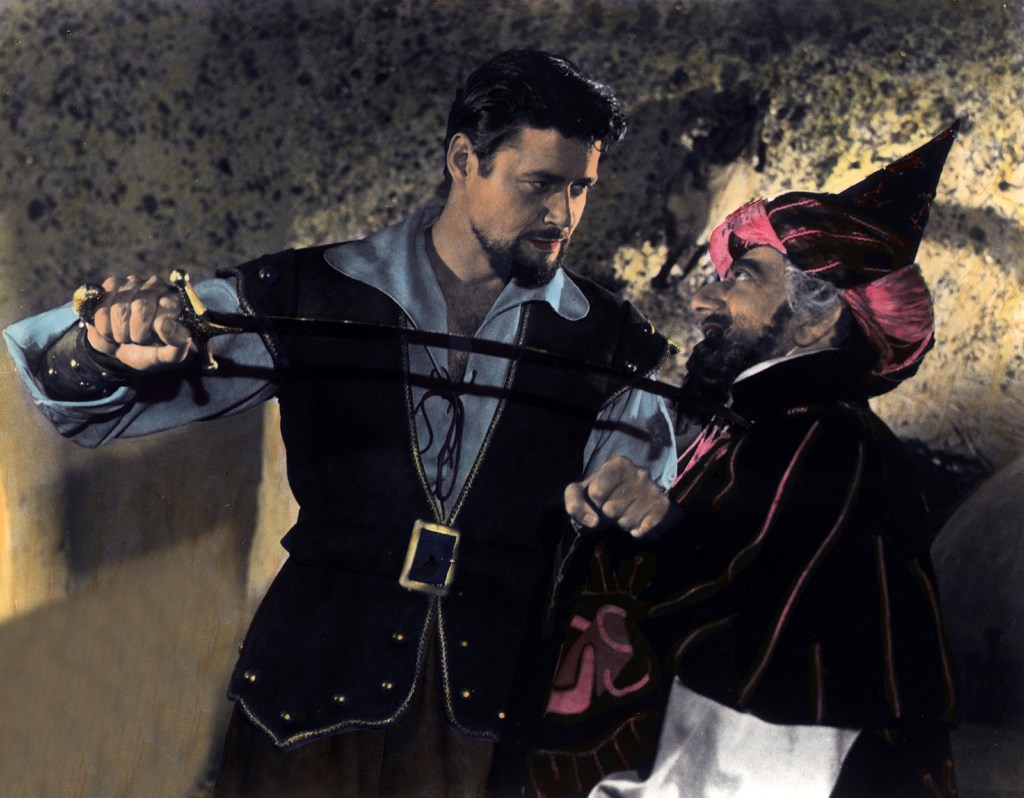
“When The Prince and the Pauper was finished,” he related to The Bristol Daily Courier in 1965, “I thought, ‘Why come home right away?’ So, my family and I stayed over there and I blew the entire TV pilot season. I wanted another series, because that fits in with my master plan. What is that? Yachts in the Mediterranean are part of it. And I don’t mind the fact that Zorro is playing all over the world in reruns. Those residual checks can be mighty comforting.”
Marc Cushman, author of the three-volume Irwin Allen’s Lost in Space: The Authorized Biography of a Classic Sci-Fi Show, muses, “To go from Zorro right into a couple of ‘sword & sandals’ movies, it was obvious he was typecast, and Williams would have understood this. Complaining wasn’t his style, but it stands to reason he would have been looking for ways to broaden his image.”
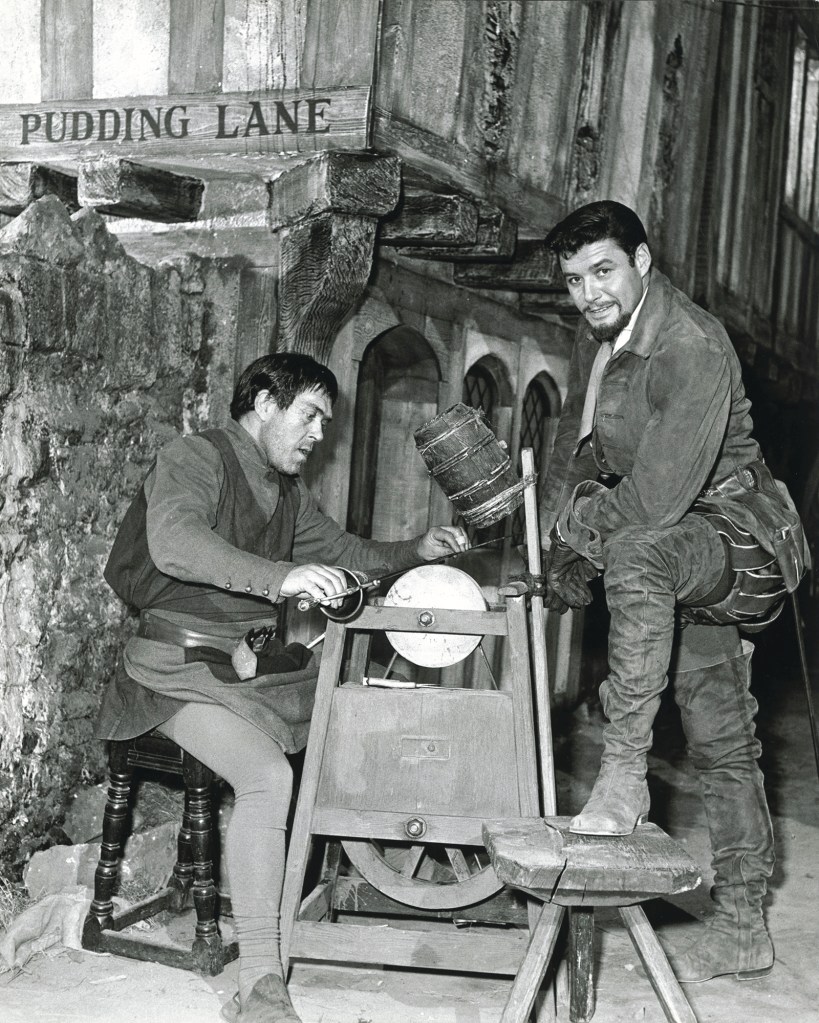
Which arrived in the form of Lost in Space, which itself was inspired by the 1812 novel The Swiss Family Robinson, only transported into outer space. Williams is Professor John Robinson, who, along with his wife, Maureen (Lassie‘s June Lockhart) and three children, Judy (Marta Kristen), Penny (Angela Cartwright), and Will (Bill Mumy), set off on a space mission.
Joining them is U.S. Space Corps Major Don West (Mark Goddard), and a stowaway/saboteur on their ship, the Jupiter 2, is Dr. Zachary Smith (Jonathan Harris), who starts off as a villain, but ultimately becomes comic relief. There is also the Robot (voiced by Bob May), who viewers may remember constantly proclaiming, “Warning! Warning! Danger! Danger!”
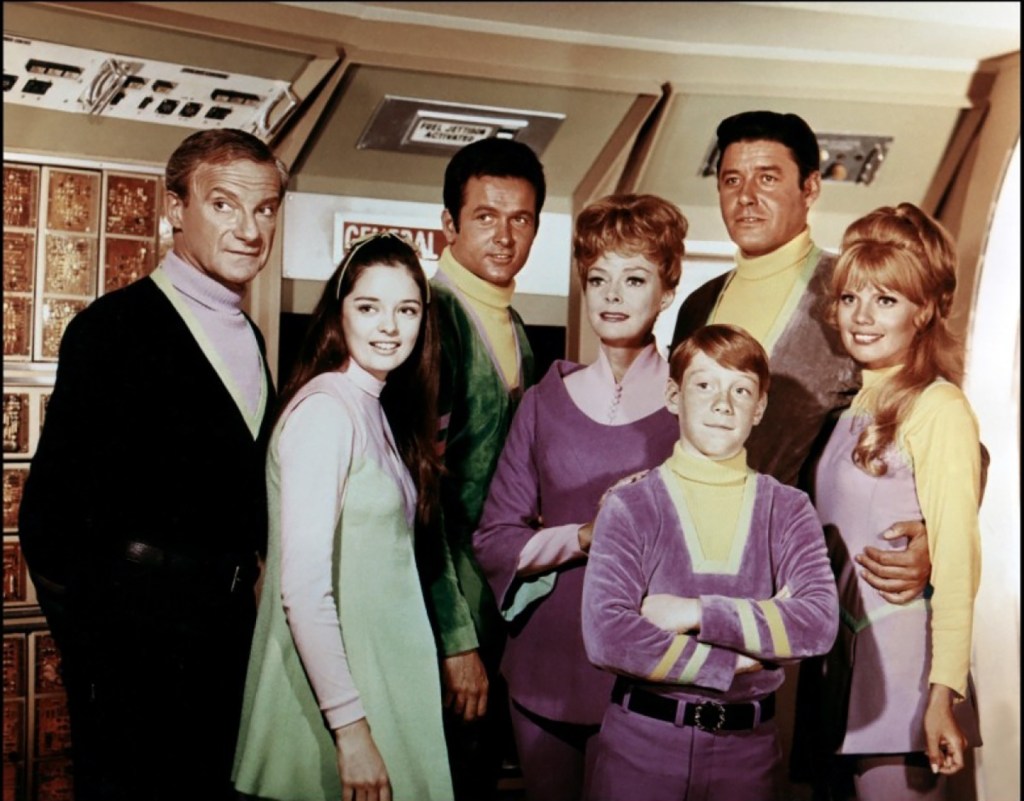
The premise at the start is that Dr. Smith’s interference causes the ship to deviate from its mission and the group finds itself, as the title says, lost in space, traveling from planet to planet. “A strange thing happens about halfway through the first season,” says Geoffrey, “in that every character was marginalized and the show became about Dr. Smith, Will Robinson and the Robot. Everybody else got, like, three lines to say every episode. And Guy Williams didn’t live, breathe, eat, sleep and breathe show business. It was a job. And after starring in Zorro and in a few films, for him to get hired as the leading man of a series where he’s almost part of the scenery is a waste. But the producers decided to follow the fan mail and just took the show from one kind of science fiction to another.”
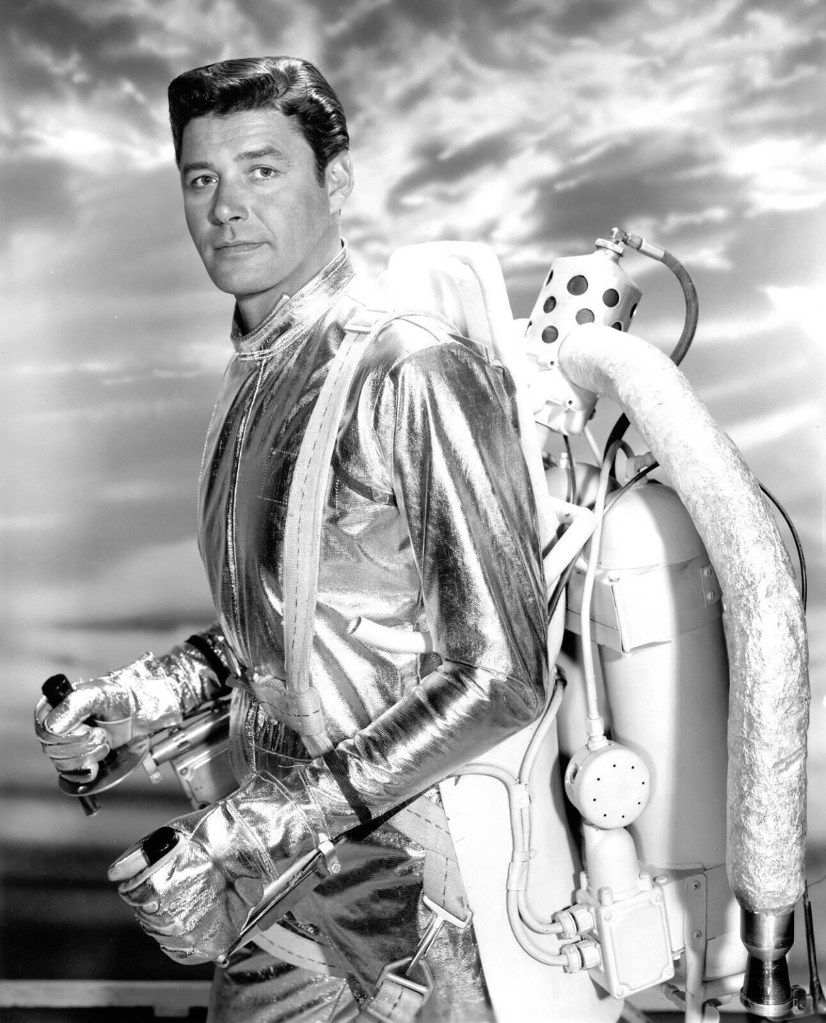
Notes Cushman, “In my research, I discovered that it was CBS that got [producer] Irwin Allen to shift the show to silliness, because of its early airtime. The directive came down to get rid of Smith and the Robot, so Irwin let Jonathan Harris run with the character and make him less threatening through comedy, so he stayed. Williams didn’t like this, but, again, he wasn’t a complainer, so he didn’t voice his opinions in the press, or even on the set. He kept his unhappiness behind closed doors. He’d talk to Irwin about it, and Irwin would throw him a few bones each season in the form of some episodes that featured John Robinson and gave Guy Williams things to do.”
Don’t Cry For Him, Argentina!
Lost in Space ran from 1965 to 1968 for a total of 83 episodes, and when it ended, so did Williams’ interest in Hollywood. Laughs Geoffrey, “While he was saying three lines a week on Lost in Space, he was taking his money from the show — as he had taken the money from Zorro — and invested it. And it turns out that Guy Williams was very good at growing money.”
Having accumulated, invested and gained a great deal of wealth, he didn’t actually need to act any longer. In 1973 he visited Argentina and was stunned to find the fervor that still surrounded him and his portrayal of Zorro. Outside of returning to America in 1983 for a reunion with the Lost in Space cast for a pair of celebrity episodes of Family Feud, he made South America his home.
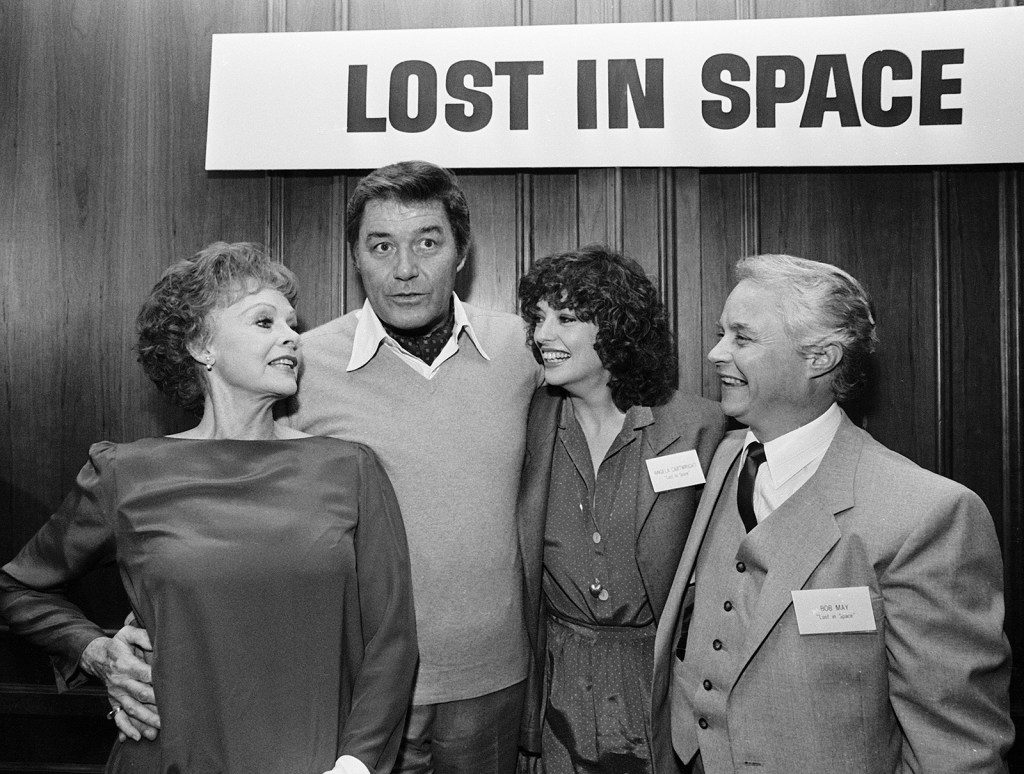
“Why?” asks Cushman rhetorically. “I could never get anyone to answer that question, and no one ever asked Guy. Lost in Space had damaged his reputation to the degree that no one bothered. He went to Argentina because he was invited to go down there and appear as Zorro, and he was amazed by his popularity. The people really came out; they worshipped him and there was always talk of doing more with the character, so he stayed. I do suspect he had lost his desire to do more TV in the U.S. But I believe he would have worked if there had been any good offers. There weren’t.”
By all accounts, Williams — who was married to Janice Cooper from 1948 to 1983 and had two children — lived happily in Argentina, simultaneously enjoying his fame there, performing live Zorro-related shows, and having the ability to escape into his own bit of solitude.
Sadly, that solitude resulted in his seemingly disappearing in 1989, though it was discovered on May 6 of that year that he had died in his apartment a week earlier of a brain aneurysm, but nobody knew.
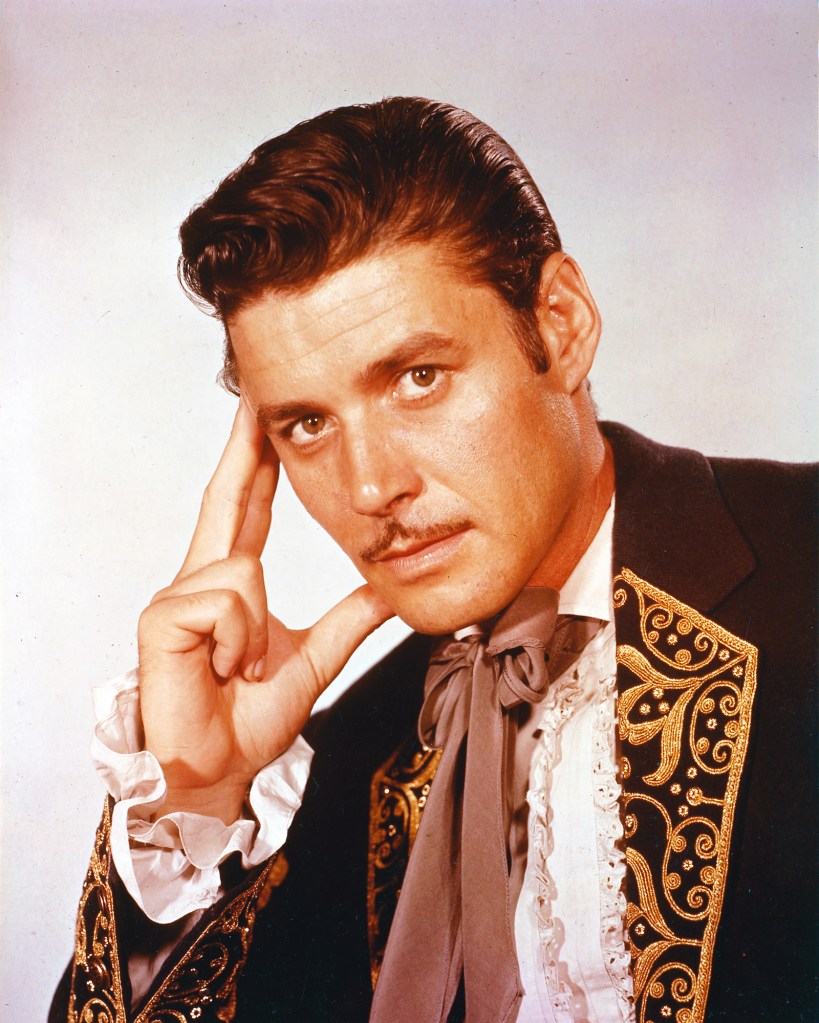
Guy Williams at 65 a was gone, but certainly hasn’t been forgotten as his two great starring vehicles — Zorro and Lost in Space — continue to live on. Reflects Geoffrey, “It’s unusual for someone whose biggest work was on television for eight seasons to still be remembered in the 21st century. Someone who very purposefully made the decision to walk away from show business and live his life, though he died way too young.”
Click through for more 1950s and 1960s nostalgia, or keep reading!
Best TV Theme Songs: Music That Shaped the Soundtracks of Our Lives
‘My Three Sons’ Stars Stanley and Barry Livingston Reveal 10 Behind-the-Scenes Secrets
To the Moon, Alice! Surprising Secrets About ‘The Honeymooners’ Cast
















